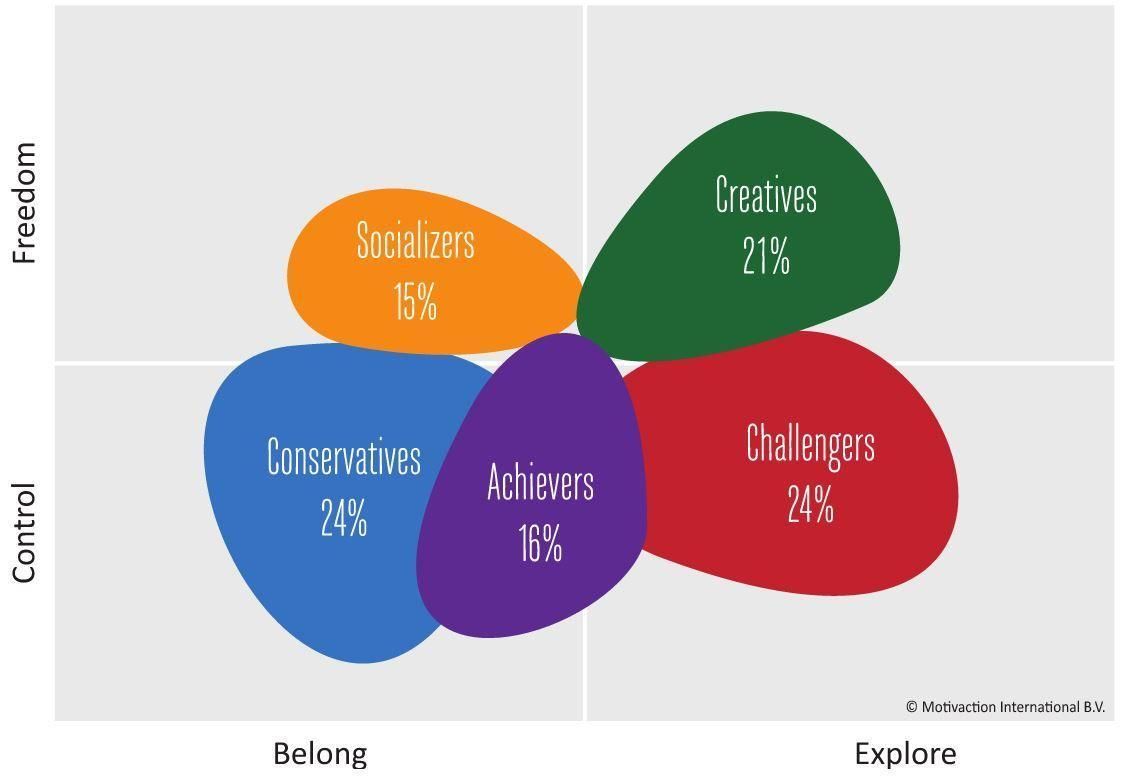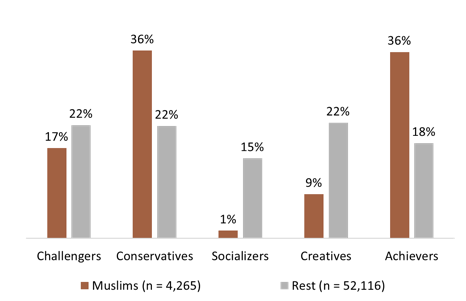How To Tap Into The Potential of Muslim Millennial Consumers
The fast-growing young Muslim population is a crucial driving force for the growth of many Islamic economy sectors, yet, many marketers in the Western world are still in the dark about the potential of the Muslim market. This article will give you a deeper understanding of how to cater to the needs of this fast-growing young Muslim group.
The business potential
The Muslim lifestyle sector has seen growth at nearly double the rate of the global economy. Muslims will play an increasingly important role in the global economy. By 2030, 29 percent of the global young population (15-29) is projected to be Muslim.
These young Muslim millennials show a rising purchasing power. However, brands that want to tap into the potential of this younger Muslim consumer segment need a deeper understanding of their needs, values, lifestyle, and how they think about their brand or product. A very important necessity for the brands is to produce Halal (lawful) and Tayyib (wholesome and pure throughout the production chain) products and services.
The Glocalities research examined the typical values Muslims adhere to while also comparing Muslims in the West with Muslims from three major Muslim countries - Indonesia, Turkey and India.
Understanding Muslim Millennials
The Glocalities survey shows that this young and dynamic group (Muslim millennials) is more internationally oriented, open to other cultures, perceptive to status, and more hedonistic than the older generations among Muslims. At the same time, there are specific values that all Muslim generations have in common (compared with non-Muslims), such as traditional family values (well- defined gender roles and marrying before cohabitating).
Glocalities research also shows Muslims are more inclined to believe in destiny and find solace in spirituality. And they tend to be more optimistic about the future than non-Muslims. Although Muslims have shared characteristics, there's also a lot of diversity among Muslim consumers.
If brands want to understand how to appeal to Muslim consumers among various generations, gender or countries, they need to dig deeper to discover the key drivers of the different Muslim consumer segments.
Discover Muslim Duality
The Glocalities values-based research reveals a very striking Muslim duality.
On the one hand, the research reveals a vast group of conservative Muslims, who are more frugal, traditional, very family oriented, less demanding in consumption, and prefer the usual products they are using (36 percent of the Muslims).
On the other hand, there is an equally vast group of Muslims (36 percent) who embrace achievement as a core value. These Muslim consumers are more status oriented, technologically advanced, like to try new products (early adopters) and they prefer brand stories.
Marketers who want to create a successful strategy to market to these Muslims need to find the sweet spot between their brand values and the values of the Muslim segment where they want to grow.

Glocalities segmentation model worldwide

Size of Glocalities segments among Muslim consumers
Create a Brand Experience that resonates
By being clear why your brand exists, you can create a brand experience that conveys the story behind your brand or product. This brand experience is especially crucial for Muslim consumers who are critical of brands. They want to know your brand story before they buy your product (more than non-Muslims according to Glocalities research). This critical examination of the story behind your brand relates to the necessity for Halal products.
To convey the brand experience that resonates with a specific Muslim segment you can use Archetypes. These archetypes are ‘original patterns’ derived from the world of mythology that unlock the human experience.
For example, to attract the values segment of Muslim Achievers, you need to have or build a brand that resonates with status and being a leader. So, as a leading brand, you can use the Archetype of the Ruler. Tell a narrative about how to create a prosperous, thriving family or community under the guidance of your Ruler brand. Without a doubt your brand stories have to be authentic, otherwise your product or brand is likely to fail.
The archetype of the Everyman resonates more with the values segment of conservative Muslims. The story of the Everyman is about the fear of not fitting in, not being accepted by his peers and consumption is often viewed as a way to fit in. Friendship and community are very important Everyman values. So by using the story of the Everyman to position your brand, you are telling your consumers that they are just fine as they are.
Muslim Achievers are a potential segment for marketers in sectors like automotive, travel, fashion because they prefer exclusive and unique products that help them to stand out and confirm their status. Values like glamorous, beauty and luxury are appealing to these younger Muslim Achievers.
To find the matching hook that works, you have to test your communication among various segments of the Muslim consumers.
Use the right Persuasion Tactics
You also need to use the right persuasion tactics for your story. Authority motivates some Muslim consumer groups, while social proof is appealing to others (join the majority), whereas humor is working for yet another segment of Muslim Millennials. By testing your communication concepts, you will find the right message that resonates with your specific target group among Muslim consumers.
If Western marketers want to start reaching out to the Muslim consumer segment, you might want to start by testing products and communications among Muslims in the West (Europe, US, Australia). Since these Muslims are more eager to spend and prefer innovative products, they form an ideal test market. By starting with young Muslims in the West, marketers can test the waters so to speak and get familiar with how to use specific values and narratives to create the right brand experience to tap into the growth potential of the young Muslim consumer. Muslims in the West form a bridge between the Western world and the huge Muslim consumer markets of the East.
Conclusion
There is no such thing as the 'Muslim' consumer. There's a lot of values-based variation among Muslim generations, age groups and countries. Glocalities values-based research reveals what values, needs, lifestyle and ideas about products will work to create the right brand experience for a specific Muslim consumer segment.
Muslim Millennials offer a massive opportunity for Western marketers because this segment is large and growing in the coming decades, has spending power and embraces more Western-oriented values like being successful and is also more hedonistic and ready to spend money if the brand experience will help them stand out while still expressing a meaningful ‘Muslim’ life.
Although Muslims share specific values, the Glocalities Research also shows a duality in values. This duality reveals two large values-based Muslim segments with their values, needs, and preferences. Conservative Muslims differ in many ways from Muslim Achievers. By understanding and respecting these differences, you can offer the right brand experience to fuel your business growth among Muslim consumers.
If you want to learn more about how to tap into the potential of Muslim consumers and read about cases, you can download our new report "Tapping into the Muslim consumer potential."


